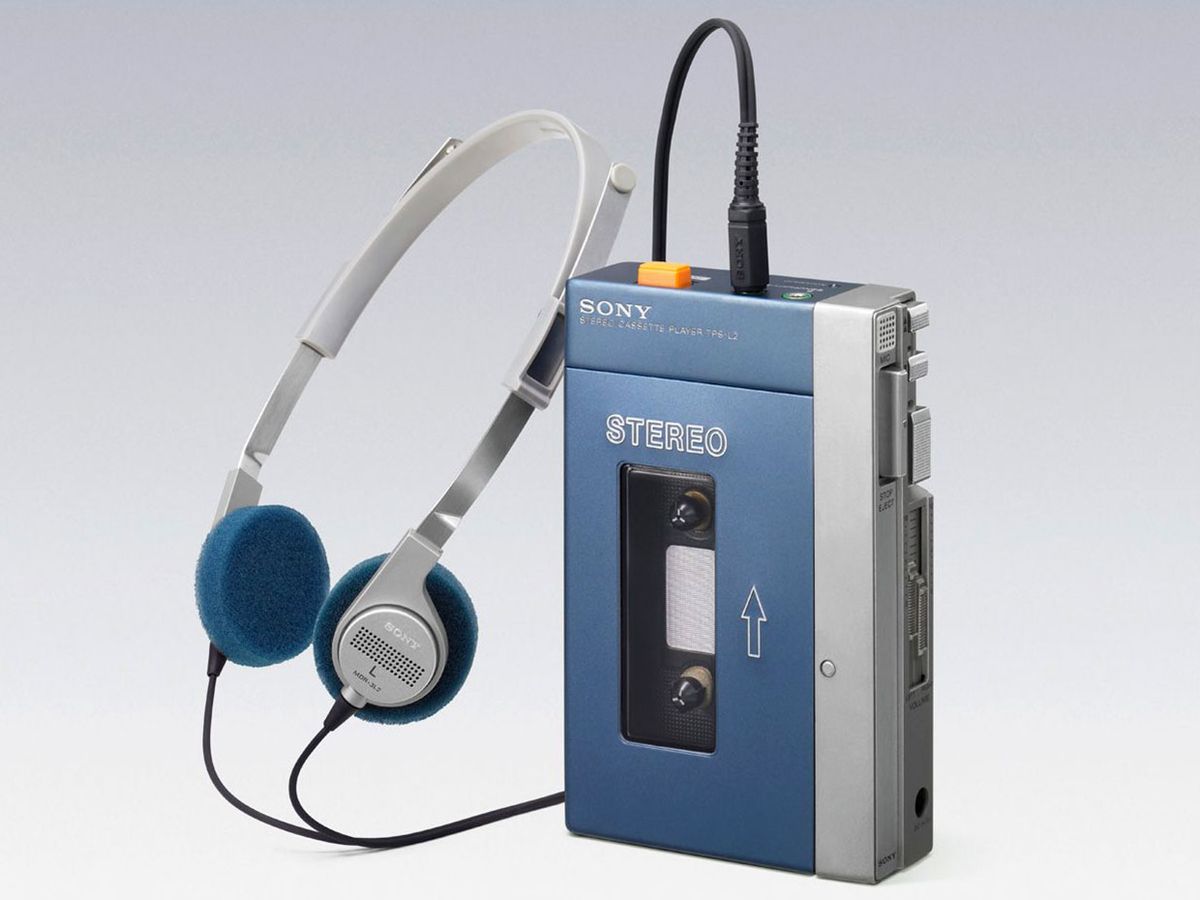Roughly half of all the people alive today were born after the Walkman was introduced. Thanks to Guardians of the Galaxy, though, almost everyone knows what a Walkman is. But if you weren’t there in 1979–80, you don’t know what a head-spinning revelation the thing was, how radically it changed the way music was played and consumed, or the stunning speed with which it became seemingly ubiquitous.
Back in the ’70s there were plenty of cassette tape decks, but the prevailing trend was to make them bigger, not smaller. Bragging rights went to whoever could pump out the most sound. The prestige player was a boom box, and in 1979, the biggest of them were about as big as a Fiat 128 and had more sophisticated lighting. (Okay, that size comparison is pure exaggeration. But on some of them, the lighting really was dazzling.)
Then Sony starts selling this little player, small enough to put in a large pocket, and inexpensive. You could take it anywhere. Today, with smartphones and earbuds nearly as commonplace as socks, young folk will have a hard time understanding how crazily revolutionary this was: You used headphones to listen to your own music privately. Nobody would know you were listening to Captain & Tennille or Air Supply unless you told them.
In fact, the Walkman came about because one guy wanted to listen to opera on airplanes without annoying his fellow passengers. This one guy, Masaru Ibuka, happened to have cofounded Sony, so his whims got a lot more attention than most people’s.
Sony was already building portable cassette products, but almost all of them emphasized recording, mostly to capture voice dictation. Almost all. In 1978, Sony introduced a nominally portable system, the TC-D5. It had great sound, but it was still fairly bulky and also cost roughly US $1,000. Ibuka had been using it for his peripatetic operatic reveries, but he asked for something easier still to carry. The request went through Norio Ohga, who gave the task to Kozo Ohsone, the lead engineer for Sony’s Pressman, a fairly pricey recorder targeted at professional journalists. Ohsone delivered a stripped-down, play-only version of the Pressman that made Ibuka happy.
At the time, sales of Sony’s portable recorders were in a downward spiral. Ibuka and the other Sony cofounder, Akio Morita, figured that if personal recorders weren’t selling, maybe personal players would. Morita instructed Ohga and Ohsone to build an even less expensive version of the device they had made for Ibuka. From a technology standpoint, there was nothing new in the Walkman. But from the standpoint of form and function, it was radical.

The first Walkman, the TPS-L2, was introduced in Japan in 1979. It was first marketed in the United States in 1980 as the Soundabout, and as the Stowaway or FreeStyle in other markets. No matter what name was on it, it had a blue and silver metal case, weighed roughly 400 grams (14 ounces), measured 150 by 90 by 35 millimeters (roughly 5.9 by 3.5 by 1.4 inches), ran on a pair of AA batteries, and sold for about US $150 in some markets. The first model came with two stereo headphone jacks, so two people could listen at the same time. The purchase price included a pair of specially designed headphones that weighed only 50 grams, possibly because the readily available headphones at the time weighed as much or more than the Walkman, and such a combination struck Sony’s designers as absurd.
The Walkman didn’t sell as fast as the iPod would a couple of decades later, but there were few precedents then for how fast they did sell. Fortuitously, the introduction of the Walkman overlapped with the start, in the United States, of the running craze; runners enthusiastically adopted them to bring along jams that would help them get through a workout. Sony noticed and in response brought out a bright yellow model, in what became a line of rugged devices they called Walkman Sports.

Sony would go on to sell 186 million cassette-playing Walkmans by the end of March 1999. As storage formats evolved, so too did the Walkman, and Sony cranked out models that played CDs and then MP3 files. To this day, Sony still sells portable digital media players bearing the Walkman name. With the recent revival of interest in retro sound systems (mostly LPs and turntables, but cassettes too) and four years after the first Guardians of the Galaxy motion picture was released, people sometimes ask as much as $450 for a working TPS-L2 on eBay.
A version of this article appears in the January 2019 print magazine as “The Sony Walkman.”
